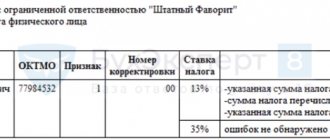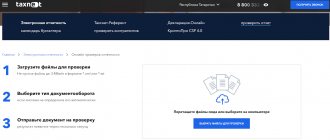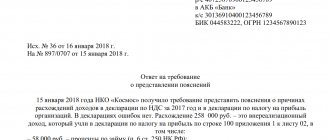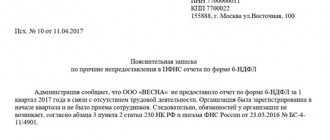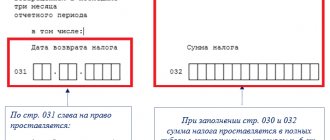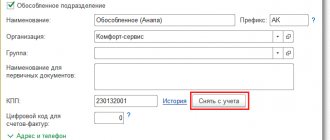Personal income tax is a tax that citizens of the Russian Federation pay to the treasury on the income they receive. Employers are required to transfer personal income tax for employees centrally to the budget in the form of taxes from the enterprise. The legislation has approved two forms by which organizations generate reports on employee income, which also includes information on deductions and accrued taxes. Until 2016, the only report on the income of individuals submitted to the tax office from an enterprise was a certificate in form 2-NDFL. The deduction and income codes changed, but only the principle of generating the certificate remained unchanged: individual information for each employee of the company. Now there are two such forms: 2-NDFL has been supplemented by calculation using form 6-NDFL. These reports are submitted to the inspectorate simultaneously - at the end of each quarter. The difference between 6-NDFL is the consolidation in one document of information relating to personal income tax for individuals who have received any payment from the company in the form of salaries, dividends and payments under other contracts.
How the tax office checks the report
When a completed report is received from an enterprise, the tax office checks it for compliance with the control indicators. The legislation provides for a procedure for checking reports, identifying inconsistencies and an algorithm for issuing requirements and applying penalties. Taxpayers have access to all information on the taxpayer, all reports are consolidated in the taxpayer’s card. Therefore, an organization should take care of such a procedure as checking 2-NDFL before submitting a tax and income tax return, since then it will not be possible to “adjust” the information. Inspectors check received reports for two types of deficiencies:
- Errors inside the report are errors associated with incorrectly specified values in the columns of the report, that is, the relationship between the lines is not satisfied (such errors are found by special accounting programs).
- Lack of necessary relationships between values in three documents: 2-NDFL, 6-NDFL and income tax return (such errors can only be detected manually).
If errors are identified, the inspector requests an explanation of the information from the accountant. If a response to the request is not sent, the tax office may order an audit. During the audit, the organization will be required to provide originals of all documentation used to complete the report to confirm the accuracy of the information. To relieve all accounting personnel from such worries, it is recommended to independently take actions such as checking 6-NDFL, and if an error is discovered by the organization, immediately provide clarification. When filling out, you need to focus on typical errors, including typos, since a typo is considered as unreliable information, even when it is obvious as a technical error.
How to check form 6-NDFL before submitting it to the tax office
Before sending 6-NDFL to the inspector, you should check it for compliance with the form of the report form and the electronic format, as well as for the correctness of completion and accuracy of the indicated indicators in the sections of the report. The control ratios developed and established by law, which were developed by the tax authorities themselves, will help to verify the correctness of the calculations. These indicators will help you detect inconsistencies in the form of simple typos and analyze whether the report has been compiled correctly. The first section of 6-NDFL contains all the information on the enterprise on a cumulative basis for all previous quarters from the beginning of the year, including the current one, and the second section contains information only for the current quarter. The sections perform different functions, so they do not correspond with each other. Therefore, to the assumption: should the amount of accrued income from section 1 of the 6-NDFL report go with the total amount from section 2, the answer is negative. No control relationships between sections can be established.
Typical errors in personal income tax declaration 6
To independently detect inaccuracies in the report, you need to know the weak points and typical common mistakes:
- Lack of practice, the report is being presented for the first time;
- insufficient knowledge of the regulatory framework and legislative acts. Comments and clarifications regarding filling out fields are published constantly. Update and review legislative news;
- correct understanding of the articles of the Tax Code;
- generating report 6 manually does not exclude the possibility of human error. When using software, it is important to correctly enter primary information, make accounting entries, and also analyze the dates the account was saved;
- constantly update the software service to adapt it to changes in legislation;
- other calculation errors: insufficient time to compile the report, counting and organizational errors.
Tax officials have noticed this peculiarity: only every tenth accountant, when preparing a declaration for the first time, submits it the first time. The rest need to carefully consider the design of each field of the report.
Checking the title page
To begin with, it is recommended to perform such a simple operation as checking that 6-NDFL is filled out correctly on the title page, then we check both parts of the report. The first sheet contains basic information about the company (name with explanation, codes, address, telephone, etc.); information about the inspection where the enterprise is registered. A separate report is generated and submitted for each branch of the enterprise, where the codes of the corresponding enterprise are indicated; a personal report is provided for the parent company. In accordance with the new changes made to the rules for filling out the title page of personal income tax-6, two lines have been allocated specifically for assignees and three codes have been added for the place of submission of the report. For the initial version of the report, the adjustment code is indicated as 000, and for adjustments - from 1 and successively further, for example, 003. Some employers mistakenly assign code 001 to the initial report.
Checking the first section
The first section should indicate the totals for all previous tax periods for all individuals to whom the company paid money. If an enterprise paid income taxed at different rates for the past reporting period, it will be required to provide the completed first part of the report for each rate on a separate sheet. If personal income tax was calculated at the rates: 13, 15, 30, 35%, then in lines 10 to 50 the manager or accountant of the enterprise enters information in each section number 1, and lines from 60 to 90 - only on page 1 of this first section. If all payments were made based on the tax rate, for example, 13%, then the organization draws up one first section, filling out all lines from 10 to 90.
Checking the second section
The design of the second section is more difficult than the first. It is very important not to make mistakes with dates and amounts. The second section consists of identical blocks for placing information on dates and amounts with lines from 100 to 140. To reliably fill out the second section, you must indicate the dates correctly. To accurately enter information, you need to prepare documentation, from which you can highlight:
- Date of actual receipt of income. This date is not the date when money is issued to an individual. This refers to the date of accrual of income (for salary, for example, this is the last day of the month).
- The date of personal income tax withholding from this income. This is the number of tax withholding from income, and not the number of the payment order for the transfer of tax.
- The last day of the period when the organization was obliged to transfer the personal income tax withheld from this income to the budget.
If these three numbers are the same, then the accountant groups the information and indicates it in one block of lines from 100 to 140. If the dates differ, the blocks are filled out individually for each date, and the number of blocks corresponds to the number of date options.
Connecting control ratios
You can carry out such work as checking whether the calculation of 6-NDFL is correct using control ratios. Control ratios are a sequence of mathematical calculations between certain lines that must coincide with other report indicators, that is, all calculations encrypted in the report lines must, when crossed, give the corresponding results. The organization is not obliged to check the control ratios of 6-NDFL (for the 3rd quarter of 2022, by the way, they will probably differ compared to the 1st quarter of the same year). This procedure is advisory in nature to eliminate elementary errors in the report made by the accountant. Some new accounting programs already include an option such as “check form 6-NDFL”, that is, automatic verification of information entered in the lines of the report for compliance with control ratios. As a result of the analysis, the program offers options for adjusting the data. However, it is recommended to take such a step as checking 6-NDFL yourself, recalculating several or all control ratios manually on a calculator - this will protect the accountant from making adjustments. The letter from the tax service contains twelve points of those indicators, the discrepancy of which will cause additional clarifications from the tax authorities. Here are some of them:
- the actual date of filing 6-NDFL coincides with the date indicated on the title page of the report;
- the calculated value of total income indicated in line 20 must be no less than the value of total deductions on line 30;
- the value of line 40 must correspond to the result of the following operations: the difference between lines 20 and 30 *line 10/100;
- the value from line 40 must be no less than the value from line 50;
- the total amount contributed to the budget must be no less than the delta between the amount of personal income tax actually withheld (line 70) and the value of line 90 (refund to the payer) of the tax.
Returning to the question of how to check 6-NDFL, we will give an example of changes in control ratios. In previous editions of the letters, it was recommended to use 6-NDFL as a control ratio for checking: line 070 should be equal to the sum of lines 140. Let us recall that in line 70 the enterprise informs how much it withheld personal income tax, in line 140 - the same tax with distribution by dates of payment of all types of remuneration. Then the tax authorities changed their minds and admit that this control ratio is not always valid. An exception to the previously proposed ratio was the transfer of actual payments in the quarter following the accrual, for example, of wages. Therefore, some amounts do not fall into line 140 in the second part of the report. There is no violation of the law in this case: one quarter ends, the report is closed, and salaries are paid in the next quarter. Hence the discrepancy in the results according to the verification formula previously proposed by the tax authorities. Based on the assumption that some organizations calculate and pay salaries according to this scheme, the Federal Tax Service excluded this control ratio from the list of mandatory ones. The department confirmed on its official website that this ratio is not mandatory. Therefore, in order to perform such an operation as checking 6-NDFL for 2022 (for any reporting period of this year), there is no need to apply this control ratio. If the accountant nevertheless decides to conduct a more pedantic study of the report being prepared for submission, we remind you that the difference in the values of the highlighted lines is the amount of the actual payment of remuneration on which tax was accrued in the current reporting period, and the payment will be made in the next quarter.
Program for passing 6-NDFL
For those who fill out the 6-NDFL report manually, we have described in detail how this should be done. This article will be of interest to those who want to speed up the process as much as possible and insure themselves against mistakes. Let's talk about how 6-NDFL is formed in the program by users who keep records in the “My Business” service. General information about 6-NDFL This report is submitted by all individual entrepreneurs and organizations that pay income to individuals: wages to employees, under civil contracts for services, dividends to founders, interest-free loans to individuals, etc. Form 6-NDFL accumulates data on all income paid and tax withheld for the entire reporting period and for the last 3 months. Deadlines: • for the first quarter – until April 30; • for half a year – until July 31; • 9 months – until October 31; • for the year – until April 1 of the following reporting year. If a company has separate divisions, it is necessary to submit a separate report for each of them, even if they belong to the same Federal Tax Service. LLCs on UTII, individual entrepreneurs on UTII or a patent submit the form at the place of registration as a single tax payer on imputed income or as registration under PSN. A new form has been introduced for reporting for 2022, approved by Order No. ММВ-7-11/18 dated January 17, 2018. Filling out 6-NDFL online in the “My Business” service. The report is generated step by step using an electronic wizard. Step 1. The user sees the terms and conditions for submitting the report on the screen. Step 2. The screen displays data on the number of individuals who received income in the reporting period and the details of the tax agent. At this stage, the user selects the type of report (primary or adjustment) and the code for the location, and also fills in the OKTMO and Federal Tax Service codes. Step 3. Here the system will show on the basis of what data for each employee certain calculation lines are formed. It is possible to select employees who work in the parent organization or in a separate division. Follow the link with full name. the employee will see all the information about his income: • income code for personal income tax purposes; • date of actual receipt of income. For example, for wages this is the last day of the month for which income was accrued. For most other payments (sick leave, dividends, vacation pay), this is the date of actual payment. • the amount of income before deduction of personal income tax; • date of withholding of personal income tax; • amount of tax withheld; • the period within which, according to law, the tax must be transferred to the budget. As a rule, this is the day after the employee’s income is paid. But for accruals such as vacation pay or sick leave, the last day of the month in which they were paid will appear. If necessary, the values of these lines can be edited, but these values are displayed automatically from the data that the user reflected in the “Salary” and “Money” section. Step 4. This section contains the dates and amounts of income and personal income tax withheld. This part contains information only on transactions that occur in the last three months of the reporting period. It will be displayed in section 2 of the ready-made 6-NDFL report for the corresponding quarter. Step 5. The indicators of the first section of the already prepared 6-NDFL report are reflected here: payments, deductions and tax for the entire period from the beginning of the reporting year. Income at different rates is indicated separately. Step 6. Submitting a report. Here the user can select how the report will be sent. Based on the chosen method, the service gives instructions for further actions. The prepared report can be viewed, saved, printed or sent to the tax office electronically. We remind you that all employers who submit information for 25 or more people must report personal income tax electronically. In the “My Business” service you can issue an electronic signature for free and send any reports from your personal account. There are strict control ratios between the 2-NDFL and 6-NDFL reports. How to check 6-NDFL so that there are no inconsistencies? The service will check everything itself. We have taken into account the control ratios and 2-NDFL certificates are generated on the basis of the 6-NDFL master. You will do everything correctly, and the tax inspector will have no reason to find fault. Using the electronic wizard, you can quickly and correctly fill out any other report and send it to the required authority. Register in our online accounting - and get a reliable and smart assistant who will replace your accountant and personnel officer.
We compare 6-NDFL for the year with 2-NDFL and profit declaration
We looked at how to check 6-personal income tax for 9 months, 3 and 6 months using the example of using control ratios along the lines of two parts inside the report. Here's how to check the 6-NDFL report for the year - it is recommended to use additional tools. As a result of checking, the values of some lines of the 6-NDFL annual report must definitely correlate with the information provided by the organization in the 2-NDFL certificate and profit declaration for the same period. Tax inspectors use the following control ratios to check the submitted report:
- the value of line 20 (total accrued income) is equal to the amount according to the declared 2-NDFL certificates and the amount in line 20 of the second appendix in the profit declaration;
- the value of line 25 (total dividends accrued) must be equal to the amount according to the declared 2-NDFL certificates and according to code 1010 correspond to Appendix 2 of the declaration;
- line 40 (calculated tax) coincides in value with line 30 of the second appendix of the declaration and with the amount of calculated tax according to the declared 2-NDFL certificates;
- the withheld tax in line 80 corresponds to line 34 of the declaration in Appendix 2 of the declaration and the amount of unwithheld tax according to the declared 2-NDFL certificates;
- the number of individuals who received payments from the enterprise is equal to the number of 2-NDFL certificates and the number of annexes No. 2 prepared for the declaration.
Reasons for errors in 6-NDFL
In order to quickly check the correctness of filling out 6-NDFL and identify errors, it is important to know the reasons for their occurrence and the most “narrow” (problematic) lines of this report, in which the occurrence of an error (inaccuracy, inaccuracy) is most likely.
The appearance of errors in 6-NDFL is influenced by the following factors:
- the novelty of the report (lack of established practice in its preparation and delivery);
- insufficient knowledge of tax legislation by report compilers - filling out 6-NDFL requires both a detailed knowledge of the algorithm for preparing the report (approved by order of the Federal Tax Service of Russia dated October 14, 2015 No. ММВ-7-11 / [email protected] ), and a deep understanding and correct application of the articles of the Tax Code Russian Federation (Chapter 23 of the Tax Code of the Russian Federation “Tax on personal income”);
- insufficient technical readiness of the software and hardware used to generate report indicators - the use of programs that do not take into account the peculiarities of data generation in lines 6-NDFL can affect the correctness of the information reflected in the report;
- unreliable generation of information in tax registers for personal income tax, which are the primary source of data for filling out 6-personal income tax;
- other types of errors (arithmetic, logical, organizational, etc.).
According to tax authorities, only every tenth tax agent manages to pass 6-NDFL without errors the first time. In this situation, it is important to be able to correctly check 6-NDFL before sending it to controllers and correct any identified inaccuracies and errors in a timely manner.
The material “How to submit an adjustment to 6-NDFL for the 1st quarter of 2016?” will help you study the mechanism for correcting inaccuracies and errors in 6-NDFL, if errors are found after submission to the tax authorities.
Fines
The deadlines for submitting the 6-NDFL report are established by law, and it is not recommended to violate them, otherwise, penalties will be imposed on the company. For failure to submit reports, in addition to a fine of 1,000 rubles for each month of delay, the organization faces the possibility that the company's current account will be completely blocked and unblocked only after the report is submitted. It seems possible to avoid penalties if the organization independently corrects errors and submits clarifications before the inspector identifies the inaccuracies. For submitting a report containing errors, the organization will be fined, and the tax office will require clarification.
How and when to submit the corrective report 6 personal income tax
If, after filling out and sending the reporting document, the tax agent discovers an error in it, then you should immediately make an adjustment and send the corrected version to the tax authority. It should be submitted in the form in which the primary document was sent (in paper or electronic form).
According to Art. 126.1 of the Tax Code of the Russian Federation, providing false information is punishable by a fine of 500 rubles for each reporting document. But if the updated calculation is submitted earlier than the error was identified by the Federal Tax Service, then the penalty is not applied.
In addition, tax authorities have the right to fine an inattentive agent in the amount of 20% of the amount of unwithheld and untransferred tax. In this case, the fine is not applied if the inaccuracies did not result in an underestimation of the tax amount.
If an inaccuracy in the submitted reporting was identified by the tax authority, about which the tax agent received a notification, then the reporting should be corrected and submitted for verification within up to 5 days.


